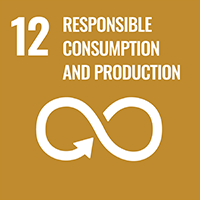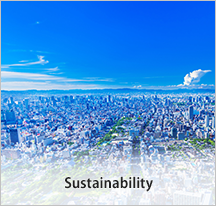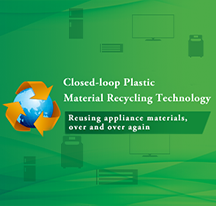Using recycled plastic was a must
Related SDGs

A major appeal of AQUOS wish is its use of recycled plastic.
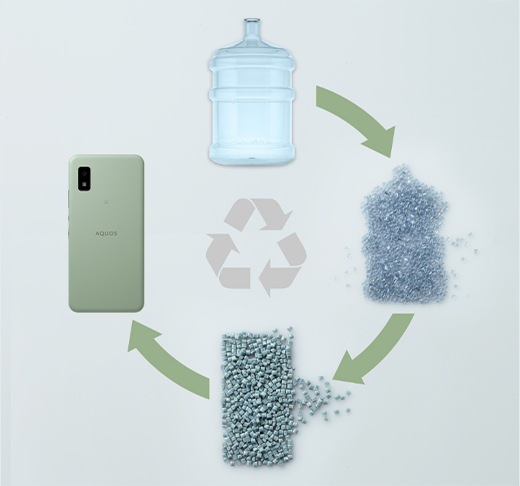
AQUOS wish’s casing is 35% recycled plastic
Fukunaga: The foremost concept of AQUOS wish was consideration for one’s surroundings and society, so consideration for the environment was something that couldn’t be left out. That’s why we suggested the use of recycled material. Today the world is addressing the SDGs, and Sharp needs to do its part in line with our long-term Eco Vision 2050.
When I interviewed Sharp people about recycled plastics, I was told they are used in the chargers of handheld terminals and refrigerator interior parts but are difficult to use for smartphone exteriors. That’s why I’m surprised to hear about the AQUOS wish concept.
Fukunaga: It hasn’t been easy (laughs). As you know, there are hardly any smartphones that tout their environmental friendliness. That makes AQUOS wish all the more significant. We had to make difficult requests to developers and I’m sure it was very hard for them.
Matsumoto: We had a tough time deciding what material to use. Right, Mr. Wake?
Wake (design): Recycled plastic materials are limited in what they can do, and because they are a lump of resin they are not very adaptable to various circumstances. Using recycled plastic for the outside of a smartphone required some ingenuity.
If the plastic is too shiny or prone to scratches, it will look cheap. So, for AQUOS wish, we decided on a matte texture and a design that felt good to the touch. I think we were able to bring out the best in the plastic. Recently, many people put covers on their smartphones, but we secretly wanted the AQUOS wish to be a smartphone that doesn’t need a cover (laughs).
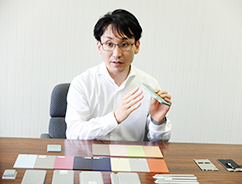
Mr. Wake, designer

-
Casing with the typical shine of plastic
-
New casing with an elegant matte texture
What design issues did you face in employing a plastic monocoque structure?
Matsumoto: The plastic monocoque is a structure in which exterior parts except for the LCD panel are integrated into one, much like a plastic bathtub. The monocoque structure can provide high strength even with soft materials, such as with a tissue paper box or a plastic bottle. Smartphones generally have a three-piece structure in which the panel, side frames, and rear casing are separate. With a monocoque structure, there are limits to the metal mold and molding is a little difficult. There are also many restrictions to the internal layout. So we aimed for a simple layout. As a result, we were able to reduce the number of parts and the weight of the main unit.
Wake: While a non-monocoque design would allow processing such as adding a shiny film to the back panel, you can’t do such a thing with this design. It’s a simple design that could only have come from a monocoque structure. We would like people to pick it up and touch it for themselves.
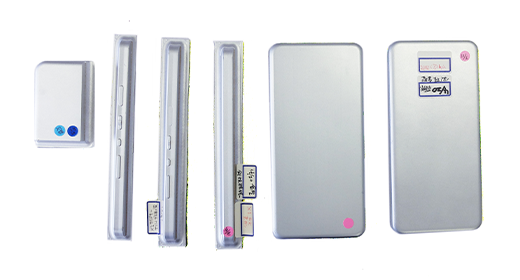
The mold for the monocoque structure, in which size and thickness were adjusted in tenths of a millimeter to create a design comfortable in the hand
I’ve heard that it’s difficult to achieve stable color in recycled plastic.
Fukunaga: Mr. Wake made a staggering number of samples. None of them had colors you would call bright and crisp; rather, their colors were muted and blended naturally into the surroundings. This was incredibly difficult to achieve, and that’s why these colors have a special place in my heart.
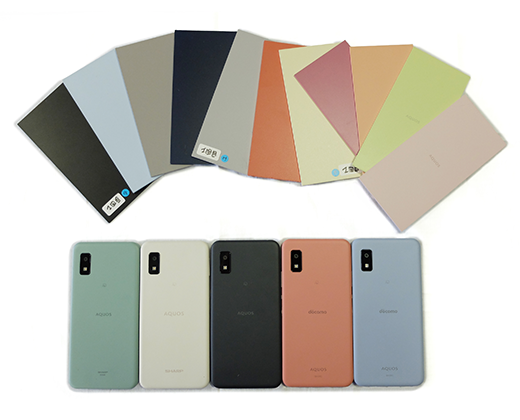
Some of the many samples created (top photo) and the actual products (bottom photo)
Wake: While bright shiny colors look good and are not so hard to create, for subdued matte colors like these you can’t cut corners or disguise them. That’s why I made so many samples. Of these, we chose colors that are similar to traditional Japanese colors: Ivory, which is not white but an unbleached off-white; Olive Green, a naturally occurring green; and Charcoal, a basic color.
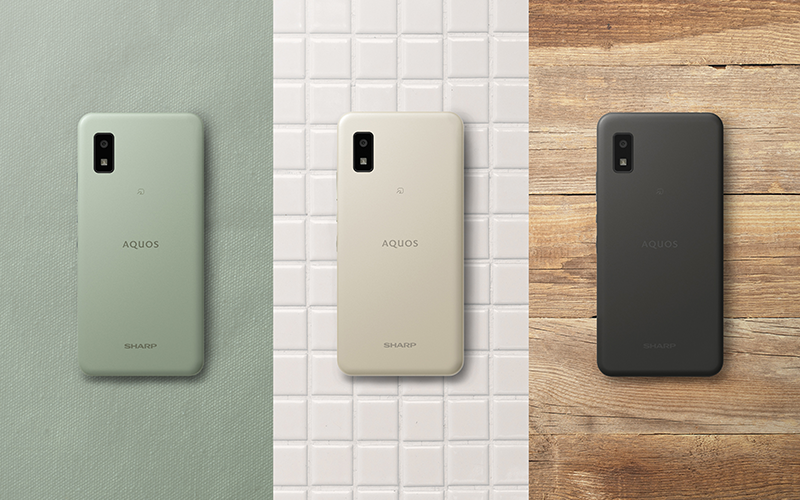
AQUOS wish comes in three colors: the highly lauded Olive Green (left), and the standard colors Ivory (center) and Charcoal (right)
Matsumoto: Subtle, natural colors are generally considered unfit for industrial products. We had a tough time.
Wake: That’s why other companies haven’t done it. I’m glad we did it with AQUOS wish.
Why did you choose plastic made from recycled water bottles?
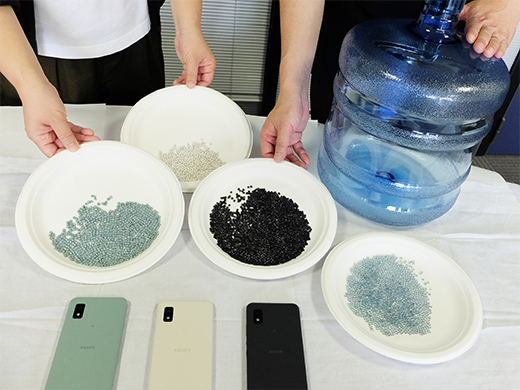
Pellets and colored pellets recycled from waste water bottles
Matsumoto: In our search for a material that could withstand use in a smartphone, we contacted numerous companies. We found that the material that struck the right balance of strength, stable supply, and cost was recycled water bottles.
From an engineer’s standpoint, customers would be inconvenienced if we did not offer the same level of reliability as with other smartphones. The AQUOS sense series, for example, is made of metal, which guarantees its strength. Getting close to that strength with plastic was what made material adjustments so difficult.
